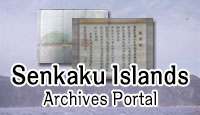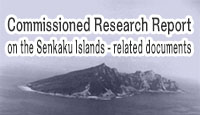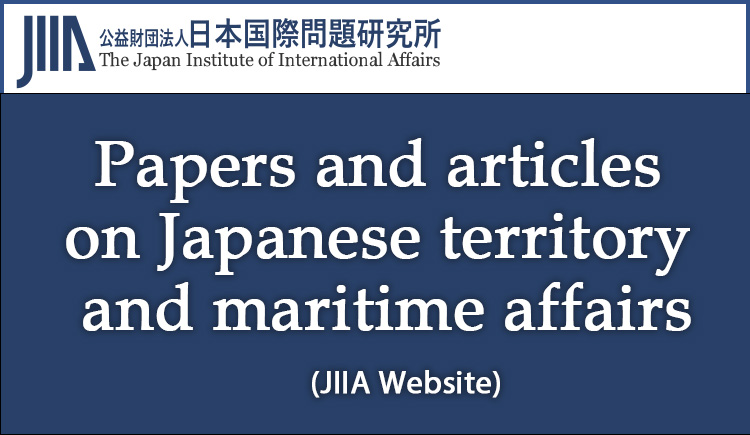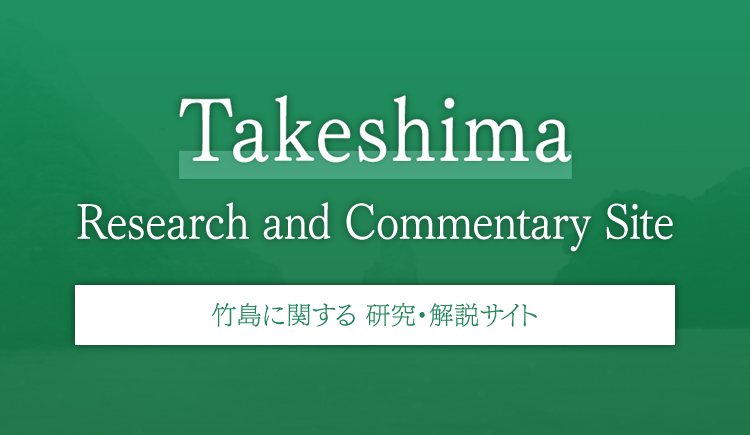The documents and materials published on this website were collected, researched, and prepared with advice from experts, as a part of a Government-commissioned project. The contents of this website do not reflect the views of the Government. Links to external sites (domains other than https://www.cas.go.jp) are not under the management of this site. For linked websites, please check with the organization/group that manages the website for the link in question.
Comprehensive issues
Addendum The Northern Territories from the Perspective of International Law
Kazuhiro Nakatani (Professor, Graduated Schools for Law and Politics, The University of Tokyo)
1. Introduction
This paper will examine the territorial dispute between Japan and the Russian Federation over the Northern Territories from the perspective of international law, and in particular, from the perspective of how a reasonable judge would be expected to make a decision on this dispute, in the event that it was referred to the International Court of Justice.
2. History prior to the San Francisco Peace Treaty
The Northern Territories refers to the Etorofu Island, Kunashiri Island, Shikotan Island, and the Habomai Islands. The position of the Government of Japan with regard to these islands is that they are an inherent part of the territory of Japan, which have never been held by foreign countries. The history of the Northern Territories up to the conclusion of the San Francisco Peace Treaty (including the major agreements concluded between Japan and Russia or the Soviet Union) is as follows.
(1) The Treaty of Commerce, Navigation and Delimitation between Japan and Russia (Treaty of Shimoda), which was signed on February 7, 1855 and entered into force on December 7, 1858, was the first agreement between Japan and Russia concerning territorial issues. The Treaty confirmed and demarcated the border between the two countries as had been naturally formed between Etorofu Island and Uruppu Island at that time. Article 2 of the Treaty stipulates the following: “Henceforth the border between Japan and Russia will pass between the islands of Etorofu and Uruppu. The whole island of Etorofu belongs to Japan and the whole island of Uruppu, and the Kurile Islands to the north of the island of Uruppu constitute possessions of Russia. As regards the island of Karafuto (Sakhalin), it remains unpartitioned between Japan and Russia, as has been the case up to this time (hereafter omitted).” [See Map A]
(2) In the Treaty for the Exchange of Sakhalin for the Kurile Islands (signed in St. Petersburg, May 7, 1875, entered into force on August 22, 1875), the rights to the Kurile Islands (18 islands from Shumushu to Uruppu) were ceded from Russia to Japan, in exchange for Japan’s cession of the rights to the island of Karafuto (Sakhalin). Article 1 of the Treaty stipulated the following: “His Majesty the Emperor of Japan shall until the reign of His heirs cede the right to possess part of the Island of Sakhalin (Karafuto) and all His sovereignty over the said part to His Majesty the Emperor of all the Russias, so that hereafter the whole of the said island belongs to the Russian Empire, and the Russo-Japanese boundary in these waters shall be La Pérouse Strait.” Article 2 goes on to stipulate the following: “In exchange for the cession to Russia of the rights on the island of Karafuto (Sakhalin) stipulated in the first article, His Majesty the Emperor of All the Russias, for Himself and for His descendants, cedes to His Majesty the Emperor of Japan the group of the islands, called Kurile which He possesses at present, together with all the rights of sovereignty appertaining to this possession, so that henceforth all the Kurile Islands shall belong to the Empire of Japan and the boundary between the Empires of Japan and Russia in these areas shall pass through the Strait between Cape Lopatka of the Peninsula of Kamchatka and the island of Shumushu. The Kurile Islands comprises the following eighteen islands: 1) Shumushu, 2) Araido, 3) Paramushiru, 4) Makanrushi, 5) Onekotan, 6) Harimukotan, 7) Ekaruma, 8) Shasukotan, 9) Mushiru, 10) Raikoke, 11) Matsua, 12) Rasutsua, 13) the islets of Suredonewa and Ushishiru, 14) Ketoi, 15) Shimushiru, 16) Buroton, 17) the islets of Cherupoi and Brat Cherupoefu and 18) Uruppu.” [See Map B]
(3) Under the provisions of Article 9 of the Portsmouth Peace Treaty, which was concluded following the outcome of the Russo-Japanese War (signed September 5, 1905, entered into force November 25, 1905), Russia ceded to Japan south Karafuto (Sakhalin, south of 50 degrees north latitude), but no changes were made to the legal status of the Kurile Islands. [See Map C]
(4) On August 9, 1945, in violation of the Neutrality Pact between Japan and the USSR, which was still in force, the Soviet Union joined the war against Japan. Immediately following Japan’s acceptance of the terms of the Potsdam Declaration on August 14, the Soviet Union began moves to occupy the Kurile Islands on August 18, and from August 28 to September 5 occupied the Northern Territories. Since then, the Soviet Union and subsequently Russia have maintained physical occupation of the islands, in violation of international law. However, in international law, “law does not arise out of injustice” (ex injuria jus non oritur). If this issue becomes a case to be tried before an international tribunal, the question of when the critical date for the Northern Territories issue should be set could conceivably arise, and it would be reasonable to set the date at the beginning of the illegal occupation by the Soviet Union from August 28 to September 5, 1945, as it is consistent with the principle that “law does not arise out of injustice.” Any actions taken by the Soviet Union / Russia after this time to make a fait accompli of their occupation of the Northern Territories would therefore have no effect on the determination of the attribution of the title to the territory.
(5) Article 2(c) of the San Francisco Peace Treaty (The Treaty of Peace with Japan), which was signed on September 8, 1951 and entered into force on April 28, 1952, stipulates that, “Japan renounces all right, title and claim to the Kurile Islands, and to that portion of Sakhalin and the islands adjacent to it over which Japan acquired sovereignty as a consequence of the Treaty of Portsmouth of September 5, 1905.” [See Map D]
3. Who possesses the power of authoritative interpretation of the San Francisco Peace Treaty?
The power of authoritative interpretation of treaties is vested in the parties to such treaties. This point is made clear in the opinion handed down in the Collection of Advisory Opinions on the “Question of Jaworzina” presided over by the Permanent Court of International Justice (PCIJ; 1923), which observed that, “…it is an established principle that the right of giving an authoritative interpretation of a legal rule belongs solely to the person or body who has power to modify or suppress it.” 1 Therefore, the States Parties to the San Francisco Peace Treaty possess the right of giving an authoritative interpretation of said treaty.
The meaning of the above mentioned Advisory Opinion is namely that: (1) non-State Parties do not possess the power of authoritative interpretation, and (2) an international court has the right of authoritative interpretation only if both parties have agreed to seek an interpretation from the international court. In terms of (1), given that the Soviet Union / Russia is a non-State Party to the San Francisco Peace Treaty (Ambassador A. A. Gromyko, head of the Soviet delegation boycotted proceedings part way through the conference and did not sign the Treaty), it has no authority to interpret it (in particular Article 2(c) and the scope of the “Kurile Islands” to which Japan renounced its right, title and claim). In terms of (2), if a request were to be made to an international court for an interpretation, the power of authoritative interpretation would be delegated to the international court.
Article 22 of the Treaty stipulates that, “If in the opinion of any Party…there has arisen a dispute concerning the interpretation or execution of the Treaty…the dispute shall, at the request of any party thereto, be referred for decision to the International Court of Justice.” The interpretation of Japan is that the “Kurile Islands” to which it renounced “right, title and claim” in Article 2(c) of the San Francisco Peace Treaty are those islands north of and including Uruppu Island, and do not include Etorofu Island, Kunashiri Island, Habomai Islands, and Shikotan Island. Since no other Party to the Treaty has expressed a view that differs explicitly from this interpretation, it is said that it would not be easy in practice to invoke Article 22 and refer the case to the International Court of Justice. However, there might be some difference between Japan and other Parties (or among other Parties) over the finer points of interpretation of the article, and if that is the case, the matter could reasonably be referred to the International Court of Justice. Given a situation in which Russia’s invasion of Ukraine has “unilaterally changed the status quo by force” and represents a blatant violation of “the rule of law in the international community,” it would be beneficial to clarify the views of each Party with regard to the interpretation of Articles 2(c) and 22 of the San Francisco Peace Treaty.
Note 1
PCIJ Ser. B, No.8, p.37.
4. Japan’s proposal to refer the case to the International Court of Justice and Russia’s rejection
On October 23, 1972, on the occasion of a Japan-USSR foreign ministers’ meeting in Moscow, Foreign Minister Masayoshi Ohira proposed to refer the Northern Territories dispute to the International Court of Justice. However, Foreign Minister Andrei Gromyko (known as “Mister Nyet”) rejected the proposal with a simple “nyet.” (See response given by Director-General Hisashi Owada of the Treaties Bureau, Ministry of Foreign Affairs, to the House of Councillors Committee on Foreign Affairs, April 2, 1986). It is for this reason that the issue of the Northern Territories has not been referred to the International Court of Justice.
Senkaku Islands
Research and Commentary Site
- I Comprehensive issues
- II Commentary on themes by historical period
- III Analysis of claims by other countries





